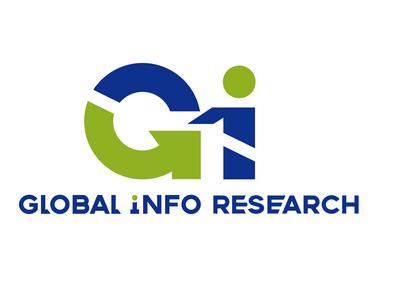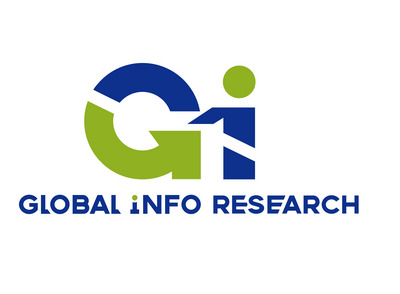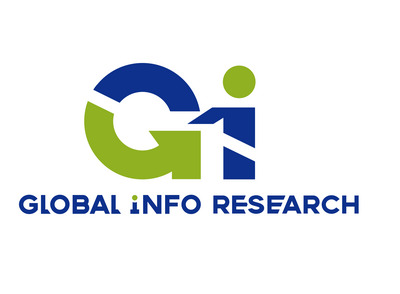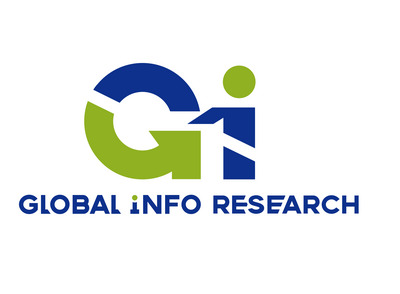
Rare Earth Doped Glass Market Competition Ranking, Market Size, Market Share, Forecast Report 2025-2031
On Oct 31, Global Info Research released "Global Rare Earth Doped Glass Market 2025 by Manufacturers, Regions, Type and Application, Forecast to 2031". This report includes an overview of the development of the Rare Earth Doped Glass industry chain, the market status of Rare Earth Doped Glass Market, and key enterprises in developed and developing market, and analysed the cutting-edge technology, patent, hot applications and market trends of Rare Earth Doped Glass.
According to our (Global Info Research) latest study, the global Rare Earth Doped Glass market size was valued at US$ 6752 million in 2024 and is forecast to a readjusted size of USD 8413 million by 2031 with a CAGR of 3.2% during review period.
In this report, we will assess the current U.S. tariff framework alongside international policy adaptations, analyzing their effects on competitive market structures, regional economic dynamics, and supply chain resilience.
In 2024, the global production of rare earth-doped glass is 235 million square meters, with an average price of US per square meter.
Rare Earth Doped Glass is a transparent material created by adding small amounts of rare earth elements, into a base glass to give it unique optical and luminescent properties. These enhanced optical characteristics make the glass useful in various technologies, including lasers, optical amplifiers for telecommunications, solid-state lighting, and sensors. The specific rare earth element and the composition of the glass host are tailored to achieve desired outcomes, like specific light emissions or improved energy transfer.
Rare-earth-doped glass is a type of material that imparts or enhances optical, laser, amplification, and functional properties by incorporating rare earth elements into a glass matrix. It is widely used in downstream applications such as optical communication amplifiers and erbium-doped optical fibers (EDFAs), gain media for solid-state lasers, fluorescent displays and lighting, infrared windows and sensors, and nuclear industry and specialty optical components. Its supply chain can be summarized from top to bottom as follows: raw material supply – intermediate preparation and forming, sintering/melt processing – and downstream device and system integration. The upstream sector primarily includes suppliers of rare earth raw materials and their oxides (such as erbium oxide, ytterbium oxide, and lanthanum oxide), high-purity silica, phosphate or fluoride melt components, and powders and chemicals. Rare earth raw materials are significantly affected by mining, smelting, separation, and international price fluctuations. The production and prices of some rare earth oxides have fluctuated in recent years, making these raw materials a major source of cost and supply chain risk. The midstream encompasses doped glass formulation design, melting (sol-gel, melt quenching, etc.), processing (drawing, cutting, optical polishing, annealing), and application-specific post-processing (melt homogenization, impurity control, dopant concentration and distribution control, etc.). A small number of manufacturers with high-purity preparation and precision temperature and atmosphere control melt processes possess the capacity to mass-produce high-value-added products. The downstream segment, a key and most differentiated sector, primarily includes optical communications, laser devices (rare-earth-doped glass laser media for medical, industrial, and scientific research), spectroscopy and sensor components, phosphor carriers for displays and lighting, and special protective and military optical components. The optical communications and laser markets place extremely high demands on material consistency, optical loss (absorption/scattering), doping uniformity, and long-term stability, posing a high barrier to entry for midstream manufacturers in terms of process and quality management. Industry leaders include traditional optical glass giants and specialized rare earth material companies, which dominate high-end doped glass and optical-grade melt processing. Regionally, East Asia (particularly China and Japan), Europe and the United States hold a large share of the materials and downstream system integration market. The technology and market for rare-earth-doped glass are evolving toward high purity, low loss, composite doping, and functionalization. Trace and nanoscale doping and co-doping techniques are being used to improve optical amplification efficiency, expand wavelengths, lower thresholds, and achieve broadband gain. Simultaneously, matrix materials are expanding from traditional silica-based glass to phosphate, fluoride, and borosilicate systems to meet diverse spectral and physical performance requirements. With the global growth of optical communication bandwidth (5G/cloud computing/data center interconnection) and the expansion of laser processing and medical lasers, demand for rare-earth-doped glass, particularly Er/Yb co-doped phosphate glass, is growing significantly in the communications and laser markets. Research and process improvements are providing upstream and midstream manufacturers with product upgrade paths, while downstream, device manufacturers' demand for doped glass with compact size, high efficiency, and excellent thermal stability is creating differentiated competitive opportunities. On the other hand, the industry faces structural obstacles, including price fluctuations of rare earth raw materials, geopolitical concerns and export controls, and rising compliance costs for environmental protection and smelting separation. Manufacturing challenges also include the process complexity of achieving doping uniformity and controlling macro-defects, the long verification cycles for high-volume consistency (particularly for telecommunications and military certification), and the high investment in high-end equipment (precision melt furnaces, inert atmosphere control, and ultra-clean melting shops) and energy consumption. These factors raise entry barriers and squeeze profit margins for smaller manufacturers in the high-end market. Research transfer and recycling (rare earth recovery) offer long-term opportunities to alleviate supply and environmental pressures.
From a market and production capacity perspective, Er/Yb co-doped phosphate glass, for example, is expected to reach nearly US billion in 2024. In terms of regional production capacity, East Asia (China, Japan, and South Korea) accounts for the majority and has strong supply capabilities for low- to mid-range products. Western manufacturers (Europe and the United States) tend to focus on high-end customization and system-level integrated solutions. Regarding gross profit margins, the new materials/optical materials segment, to which doped glass belongs, generally boasts higher gross margins than standard industrial glass. Listed companies expect double-digit gross profit margins in their new materials businesses, with further increases expected following optimization of technology, scale, and product mix. However, significant differences exist between different applications, with margins for custom military/communications parts typically significantly higher than for commercial lighting or standard optical sheeting. Overall, capacity utilization and gross profit margins fluctuate significantly depending on the nature of downstream orders, certification status, and fluctuations in raw material prices.
This report is a detailed and comprehensive analysis for global Rare Earth Doped Glass market. Both quantitative and qualitative analyses are presented by manufacturers, by region & country, by Doping Element and by Application. As the market is constantly changing, this report explores the competition, supply and demand trends, as well as key factors that contribute to its changing demands across many markets. Company profiles and product examples of selected competitors, along with market share estimates of some of the selected leaders for the year 2025, are provided.
According to our (Global Info Research) latest study, the global Rare Earth Doped Glass market size was valued at US$ 6752 million in 2024 and is forecast to a readjusted size of USD 8413 million by 2031 with a CAGR of 3.2% during review period.
In this report, we will assess the current U.S. tariff framework alongside international policy adaptations, analyzing their effects on competitive market structures, regional economic dynamics, and supply chain resilience.
In 2024, the global production of rare earth-doped glass is 235 million square meters, with an average price of US per square meter.
Rare Earth Doped Glass is a transparent material created by adding small amounts of rare earth elements, into a base glass to give it unique optical and luminescent properties. These enhanced optical characteristics make the glass useful in various technologies, including lasers, optical amplifiers for telecommunications, solid-state lighting, and sensors. The specific rare earth element and the composition of the glass host are tailored to achieve desired outcomes, like specific light emissions or improved energy transfer.
Rare-earth-doped glass is a type of material that imparts or enhances optical, laser, amplification, and functional properties by incorporating rare earth elements into a glass matrix. It is widely used in downstream applications such as optical communication amplifiers and erbium-doped optical fibers (EDFAs), gain media for solid-state lasers, fluorescent displays and lighting, infrared windows and sensors, and nuclear industry and specialty optical components. Its supply chain can be summarized from top to bottom as follows: raw material supply – intermediate preparation and forming, sintering/melt processing – and downstream device and system integration. The upstream sector primarily includes suppliers of rare earth raw materials and their oxides (such as erbium oxide, ytterbium oxide, and lanthanum oxide), high-purity silica, phosphate or fluoride melt components, and powders and chemicals. Rare earth raw materials are significantly affected by mining, smelting, separation, and international price fluctuations. The production and prices of some rare earth oxides have fluctuated in recent years, making these raw materials a major source of cost and supply chain risk. The midstream encompasses doped glass formulation design, melting (sol-gel, melt quenching, etc.), processing (drawing, cutting, optical polishing, annealing), and application-specific post-processing (melt homogenization, impurity control, dopant concentration and distribution control, etc.). A small number of manufacturers with high-purity preparation and precision temperature and atmosphere control melt processes possess the capacity to mass-produce high-value-added products. The downstream segment, a key and most differentiated sector, primarily includes optical communications, laser devices (rare-earth-doped glass laser media for medical, industrial, and scientific research), spectroscopy and sensor components, phosphor carriers for displays and lighting, and special protective and military optical components. The optical communications and laser markets place extremely high demands on material consistency, optical loss (absorption/scattering), doping uniformity, and long-term stability, posing a high barrier to entry for midstream manufacturers in terms of process and quality management. Industry leaders include traditional optical glass giants and specialized rare earth material companies, which dominate high-end doped glass and optical-grade melt processing. Regionally, East Asia (particularly China and Japan), Europe and the United States hold a large share of the materials and downstream system integration market. The technology and market for rare-earth-doped glass are evolving toward high purity, low loss, composite doping, and functionalization. Trace and nanoscale doping and co-doping techniques are being used to improve optical amplification efficiency, expand wavelengths, lower thresholds, and achieve broadband gain. Simultaneously, matrix materials are expanding from traditional silica-based glass to phosphate, fluoride, and borosilicate systems to meet diverse spectral and physical performance requirements. With the global growth of optical communication bandwidth (5G/cloud computing/data center interconnection) and the expansion of laser processing and medical lasers, demand for rare-earth-doped glass, particularly Er/Yb co-doped phosphate glass, is growing significantly in the communications and laser markets. Research and process improvements are providing upstream and midstream manufacturers with product upgrade paths, while downstream, device manufacturers' demand for doped glass with compact size, high efficiency, and excellent thermal stability is creating differentiated competitive opportunities. On the other hand, the industry faces structural obstacles, including price fluctuations of rare earth raw materials, geopolitical concerns and export controls, and rising compliance costs for environmental protection and smelting separation. Manufacturing challenges also include the process complexity of achieving doping uniformity and controlling macro-defects, the long verification cycles for high-volume consistency (particularly for telecommunications and military certification), and the high investment in high-end equipment (precision melt furnaces, inert atmosphere control, and ultra-clean melting shops) and energy consumption. These factors raise entry barriers and squeeze profit margins for smaller manufacturers in the high-end market. Research transfer and recycling (rare earth recovery) offer long-term opportunities to alleviate supply and environmental pressures.
From a market and production capacity perspective, Er/Yb co-doped phosphate glass, for example, is expected to reach nearly US billion in 2024. In terms of regional production capacity, East Asia (China, Japan, and South Korea) accounts for the majority and has strong supply capabilities for low- to mid-range products. Western manufacturers (Europe and the United States) tend to focus on high-end customization and system-level integrated solutions. Regarding gross profit margins, the new materials/optical materials segment, to which doped glass belongs, generally boasts higher gross margins than standard industrial glass. Listed companies expect double-digit gross profit margins in their new materials businesses, with further increases expected following optimization of technology, scale, and product mix. However, significant differences exist between different applications, with margins for custom military/communications parts typically significantly higher than for commercial lighting or standard optical sheeting. Overall, capacity utilization and gross profit margins fluctuate significantly depending on the nature of downstream orders, certification status, and fluctuations in raw material prices.
This report is a detailed and comprehensive analysis for global Rare Earth Doped Glass market. Both quantitative and qualitative analyses are presented by manufacturers, by region & country, by Doping Element and by Application. As the market is constantly changing, this report explores the competition, supply and demand trends, as well as key factors that contribute to its changing demands across many markets. Company profiles and product examples of selected competitors, along with market share estimates of some of the selected leaders for the year 2025, are provided.
Sample Report Request Rare Earth Doped Glass
https://www.globalinforesearch.com/reports/3075855/rare-earth-doped-glass
Market segment by Type: Erbium (Er)、 Ytterbium (Yb)、 Neodymium (Nd)、 Thulium (Tm)、 Holmium (Ho)、 Cerium (Ce)
Market segment by Application: Laser、 Optical Communications、 Medical、 Architecture、 Defense、 Others
Major players covered: Schott、 Coherent、 Corning、 Fibercore、 Exail、 Thorlabs、 Optogama、 Stanford Materials、 Mitsui Kinzoku、 Dausinger + Giesen GmbH、 Borosil、 Le Verre Fluoré、 American Elements、 Yaohui Group、 Kavalier、 Ohara Corp、 Taiyo Koko
Market segment by region, regional analysis covers: North America (United States, Canada and Mexico), Europe (Germany, France, United Kingdom, Russia, Italy, and Rest of Europe), Asia-Pacific (China, Japan, Korea, India, Southeast Asia, and Australia),South America (Brazil, Argentina, Colombia, and Rest of South America),Middle East & Africa (Saudi Arabia, UAE, Egypt, South Africa, and Rest of Middle East & Africa).
The content of the study subjects, includes a total of 15 chapters:
Chapter 1, to describe Rare Earth Doped Glass product scope, market overview, market estimation caveats and base year.
Chapter 2, to profile the top manufacturers of Rare Earth Doped Glass, with price, sales, revenue and global market share of Rare Earth Doped Glass from 2020 to 2025.
Chapter 3, the Rare Earth Doped Glass competitive situation, sales quantity, revenue and global market share of top manufacturers are analyzed emphatically by landscape contrast.
Chapter 4, the Rare Earth Doped Glass breakdown data are shown at the regional level, to show the sales quantity, consumption value and growth by regions, from 2020 to 2031.
Chapter 5 and 6, to segment the sales by Type and application, with sales market share and growth rate by type, application, from 2020 to 2031.
Chapter 7, 8, 9, 10 and 11, to break the sales data at the country level, with sales quantity, consumption value and market share for key countries in the world, from 2020 to 2024.and Rare Earth Doped Glass market forecast, by regions, type and application, with sales and revenue, from 2025 to 2031.
Chapter 12, market dynamics, drivers, restraints, trends and Porters Five Forces analysis.
Chapter 13, the key raw materials and key suppliers, and industry chain of Rare Earth Doped Glass.
Chapter 14 and 15, to describe Rare Earth Doped Glass sales channel, distributors, customers, research findings and conclusion.
https://www.globalinforesearch.com/reports/3075855/rare-earth-doped-glass
Market segment by Type: Erbium (Er)、 Ytterbium (Yb)、 Neodymium (Nd)、 Thulium (Tm)、 Holmium (Ho)、 Cerium (Ce)
Market segment by Application: Laser、 Optical Communications、 Medical、 Architecture、 Defense、 Others
Major players covered: Schott、 Coherent、 Corning、 Fibercore、 Exail、 Thorlabs、 Optogama、 Stanford Materials、 Mitsui Kinzoku、 Dausinger + Giesen GmbH、 Borosil、 Le Verre Fluoré、 American Elements、 Yaohui Group、 Kavalier、 Ohara Corp、 Taiyo Koko
Market segment by region, regional analysis covers: North America (United States, Canada and Mexico), Europe (Germany, France, United Kingdom, Russia, Italy, and Rest of Europe), Asia-Pacific (China, Japan, Korea, India, Southeast Asia, and Australia),South America (Brazil, Argentina, Colombia, and Rest of South America),Middle East & Africa (Saudi Arabia, UAE, Egypt, South Africa, and Rest of Middle East & Africa).
The content of the study subjects, includes a total of 15 chapters:
Chapter 1, to describe Rare Earth Doped Glass product scope, market overview, market estimation caveats and base year.
Chapter 2, to profile the top manufacturers of Rare Earth Doped Glass, with price, sales, revenue and global market share of Rare Earth Doped Glass from 2020 to 2025.
Chapter 3, the Rare Earth Doped Glass competitive situation, sales quantity, revenue and global market share of top manufacturers are analyzed emphatically by landscape contrast.
Chapter 4, the Rare Earth Doped Glass breakdown data are shown at the regional level, to show the sales quantity, consumption value and growth by regions, from 2020 to 2031.
Chapter 5 and 6, to segment the sales by Type and application, with sales market share and growth rate by type, application, from 2020 to 2031.
Chapter 7, 8, 9, 10 and 11, to break the sales data at the country level, with sales quantity, consumption value and market share for key countries in the world, from 2020 to 2024.and Rare Earth Doped Glass market forecast, by regions, type and application, with sales and revenue, from 2025 to 2031.
Chapter 12, market dynamics, drivers, restraints, trends and Porters Five Forces analysis.
Chapter 13, the key raw materials and key suppliers, and industry chain of Rare Earth Doped Glass.
Chapter 14 and 15, to describe Rare Earth Doped Glass sales channel, distributors, customers, research findings and conclusion.
Data Sources:
Via authorized organizations:customs statistics, industrial associations, relevant international societies, and academic publications etc.
Via trusted Internet sources.Such as industry news, publications on this industry, annual reports of public companies, Bloomberg Business, Wind Info, Hoovers, Factiva (Dow Jones & Company), Trading Economics, News Network, Statista, Federal Reserve Economic Data, BIS Statistics, ICIS, Companies House Documentsm, investor presentations, SEC filings of companies, etc.
Via interviews. Our interviewees includes manufacturers, related companies, industry experts, distributors, business (sales) staff, directors, CEO, marketing executives, executives from related industries/organizations, customers and raw material suppliers to obtain the latest information on the primary market;
Via data exchange. We have been consulting in this industry for 16 years and have collaborations with the players in this field. Thus, we get access to (part of) their unpublished data, by exchanging with them the data we have.
Via authorized organizations:customs statistics, industrial associations, relevant international societies, and academic publications etc.
Via trusted Internet sources.Such as industry news, publications on this industry, annual reports of public companies, Bloomberg Business, Wind Info, Hoovers, Factiva (Dow Jones & Company), Trading Economics, News Network, Statista, Federal Reserve Economic Data, BIS Statistics, ICIS, Companies House Documentsm, investor presentations, SEC filings of companies, etc.
Via interviews. Our interviewees includes manufacturers, related companies, industry experts, distributors, business (sales) staff, directors, CEO, marketing executives, executives from related industries/organizations, customers and raw material suppliers to obtain the latest information on the primary market;
Via data exchange. We have been consulting in this industry for 16 years and have collaborations with the players in this field. Thus, we get access to (part of) their unpublished data, by exchanging with them the data we have.
From our partners.We have information agencies as partners and they are located worldwide, thus we get (or purchase) the latest data from them.
Via our long-term tracking and gathering of data from this industry.We have a database that contains history data regarding the market.
Via our long-term tracking and gathering of data from this industry.We have a database that contains history data regarding the market.
About Us:
Global Info Research
Web: https://www.globalinforesearch.com
CN: 0086-176 6505 2062
HK: 00852-58030175
US: 001-347 966 1888
Email: report@globalinforesearch.com
Web: https://www.globalinforesearch.com
CN: 0086-176 6505 2062
HK: 00852-58030175
US: 001-347 966 1888
Email: report@globalinforesearch.com
Global Info Research is a company that digs deep into global industry information to support enterprises with market strategies and in-depth market development analysis reports. We provides market information consulting services in the global region to support enterprise strategic planning and official information reporting, and focuses on customized research, management consulting, IPO consulting, industry chain research, database and top industry services. At the same time, Global Info Research is also a report publisher, a customer and an interest-based suppliers, and is trusted by more than 30,000 companies around the world. We will always carry out all aspects of our business with excellent expertise and experience.





